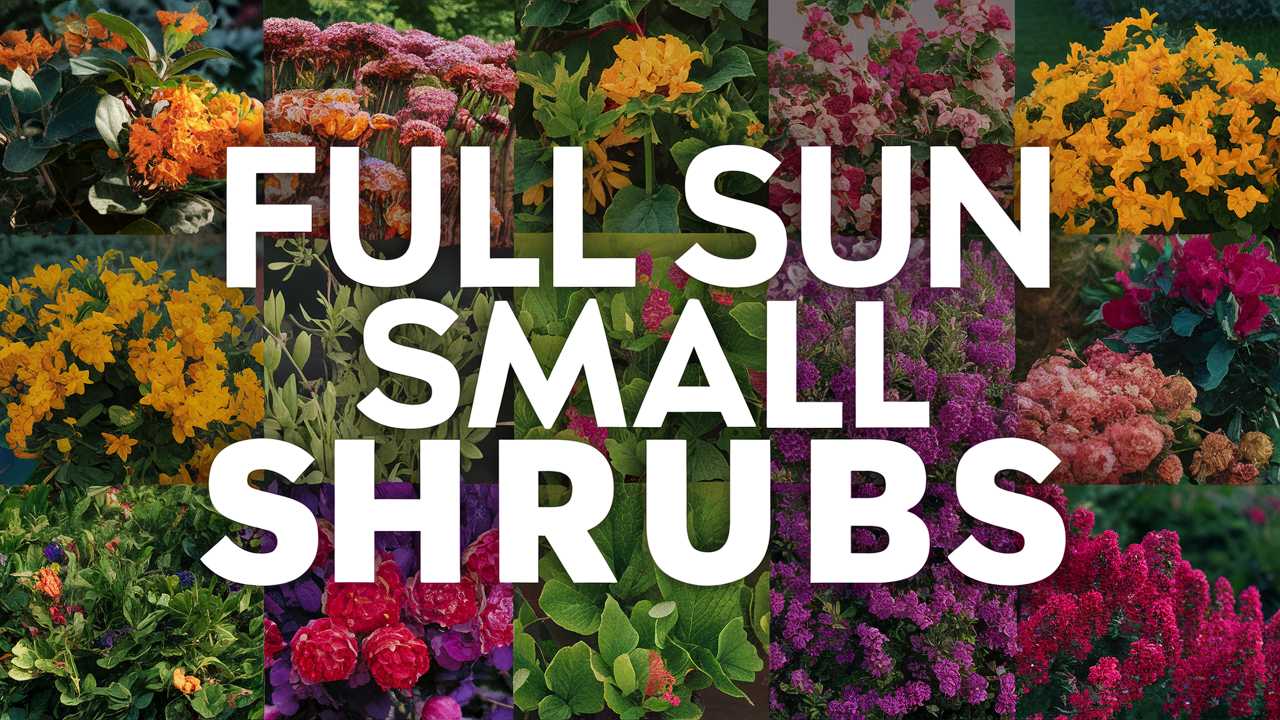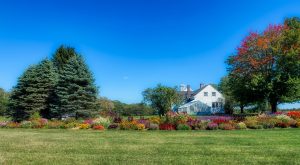In this guide, we will explore some of the most stunning small shrubs that thrive in full sun conditions, providing detailed insights into their characteristics, care, and contributions to the landscape.
Winter Heath (Erica carnea)
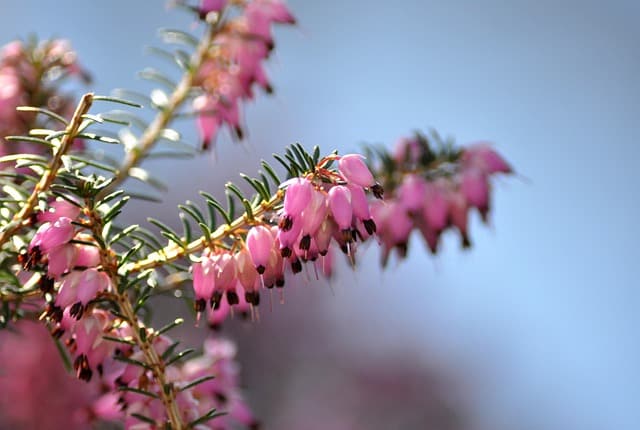
Winter Heath, or Erica carnea, is a delightful ground-hugging shrub that greets the early spring with vibrant blooms. This hardy evergreen plant features needle-like foliage that can withstand chilly temperatures while brightening up the garden. It typically grows to about 12 to 18 inches in height and spreads widely, making it an excellent choice for ground cover.
The unique charm of Winter Heath lies in its early blooms. The rosy pink or white flowers start to appear as winter gives way to spring, providing essential early-season color when many other plants are still dormant. Not only do these flowers add beauty to the garden, but they also attract important pollinators including bees and butterflies, helping to boost the local ecosystem.
Gardeners love Winter Heath for its adaptability to poor, sandy soils that many other plants struggle with. It thrives in full sun to partial shade but performs best in sunny spots, where its compact form creates a carpet of colorful blossoms. As a low-maintenance shrub, it requires minimal care, only needing occasional pruning to keep its shape and promote healthier blooms.
Additionally, Winter Heath’s evergreen nature offers year-round interest in the garden. Its foliage provides a lush backdrop even in the cold months, creating texture and depth. This shrub can be interplanted with other perennials or used alongside bulbs for an extended flowering season, making it quite a versatile choice for any sunny landscape.
Virginia Sweetspire (Itea virginica)
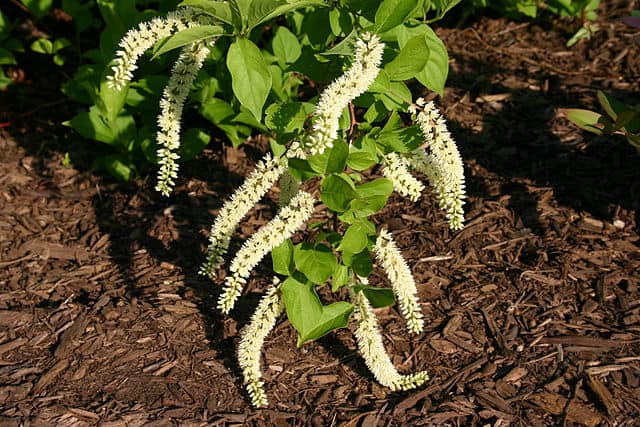
Virginia Sweetspire, scientifically known as Itea virginica, is a stunning native shrub that flourishes in well-drained soils under full sun. This deciduous shrub can reach heights of 3 to 6 feet, with a charming sprawling habit that creates an inviting and naturalistic atmosphere in any garden. The fragrant white flowers that bloom in clusters during late spring to early summer not only add aesthetic appeal but also attract honeybees and butterflies, making it a favorite among pollinator enthusiasts.
One of the main attractions of Virginia Sweetspire is its fantastic foliage, which remains lush and green throughout spring and summer, only to transform into brilliant shades of red, orange, and gold in the fall. This seasonal transformation creates a vibrant display that enhances the garden’s aesthetics during autumn when many other plants begin to fade. For gardeners looking to add multi-season interest, Virginia Sweetspire is an excellent option.
Virginia Sweetspire prefers moist, well-drained soil but is adaptable enough to thrive in a variety of conditions, including sandy or clay soils. Its ability to tolerate wet conditions makes it ideal for rain gardens or slightly swampy areas. Planting in full sun ensures denser foliage and prolific flowering, while partial shade can be tolerated but may result in fewer blooms.
When incorporating Virginia Sweetspire into landscape designs, it works beautifully as a standalone specimen, in group plantings, or even as a low hedge. With its appealing fragrance, vibrant flowers, and lush fall colors, it enhances the sensory experience of any garden.
Dwarf Fothergilla (Fothergilla gardenii)
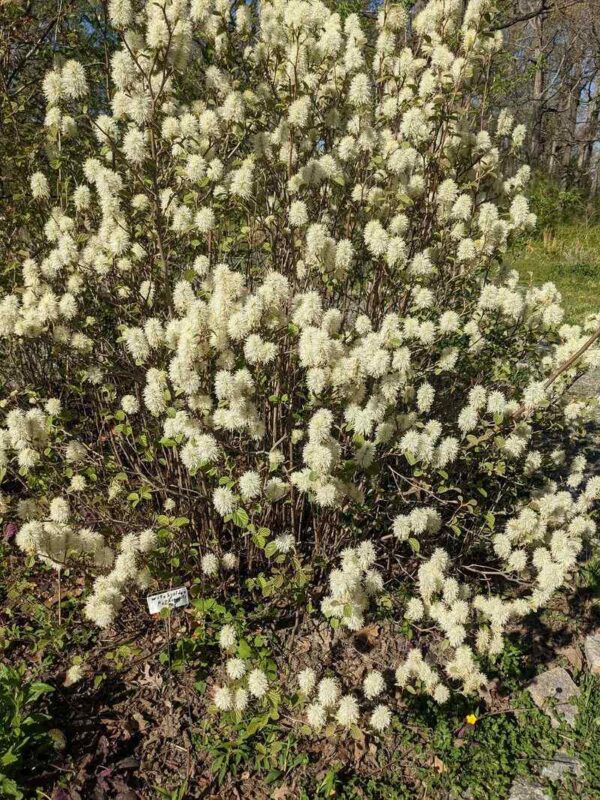
The Dwarf Fothergilla, a native deciduous shrub, stands out for its unique characteristics and garden versatility. Growing to about 2 to 3 feet in height, it provides an excellent option for those seeking to add structure without overwhelming other plants. The shrub features dense, obovate leaves that are light to dark green, changing to vibrant oranges, reds, and yellows in the fall, offering stunning seasonal display thoughout the year.
In spring, Dwarf Fothergilla produces fluffy, bottlebrush-like flower spikes that are white to cream in color. These flowers not only add an air of softness to the landscape but also release a sweet honey-like scent, making them appealing to bees and other pollinators. The flowers bloom before the leaves fully emerge, providing a delightful surprise that adds beauty to spring gardens when few other plants are blooming.
This shrub thrives in acidic, well-drained soils and prefers full sun to partial shade, although it performs best with ample sunlight. Its compact nature and adaptability make it a favorite for garden borders, mixed shrub plantings, and even as a foundation plant. Given its low water requirements once established, it is also a suitable choice for environmentally sustainable landscapes.
In terms of care, Dwarf Fothergilla rarely requires pruning, except to maintain shape or remove any dead wood. This low-maintenance characteristic, combined with its eye-catching fall color and spring blooms, has made it a must-have for gardeners looking to enhance their landscapes with lasting beauty.
Lavender (Lavandula)

Lavender is one of the most beloved and versatile plants in sunny gardens, appreciated not only for its stunning appearance but also for its delightful fragrance. With a range of species available, many hybrids grow 1 to 3 feet in height, providing a perfect solution for borders, pathways, or containers.
The silver-green foliage of lavender is accompanied by tall spikes of purple flowers, which bloom in late spring to early summer. These flowers are not only visually striking but also emit a soothing aroma that can enhance outdoor spaces. Additionally, lavender draws important pollinators such as bees and butterflies, making it a valuable addition to any garden.
Lavender thrives in sunny locations with well-drained, slightly alkaline soils. It excels in hot, dry conditions, making it an excellent choice for xeriscaping and low water-use gardens. One of its most attractive features for gardeners is its drought tolerance once established, requiring little care beyond regular deadheading to encourage prolonged blooming.
Gardeners can take advantage of its versatility by using lavender as edging, in mixed borders, or even in Mediterranean-themed gardens. Beyond ornamental uses, its dried flowers can be harvested and used in sachets, culinary dishes, and fragrant infusions, making it a practical plant as well.
The overall experience of growing lavender in a full sun garden is rewarding due to its aromatic and visual contributions, and it remains a favorite for both novice and experienced gardeners alike.
Forsythia
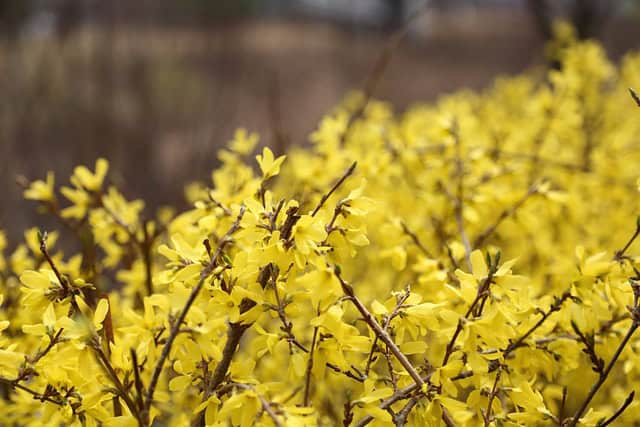
Forsythia is synonymous with the arrival of spring, captivating onlookers with its exuberant display of bright yellow flowers that burst forth before the leaves. Typically growing to about 3 to 10 feet tall, Forsythia can be shaped and pruned according to the design goals of the gardener, making it versatile for various spaces.
The vibrance of Forsythia’s gold-colored blooms creates a stunning focal point in the garden, and the flowering period usually occurs in early spring, heralding the end of winter. This strong seasonal appearance can be complemented by the shrub’s rich green foliage, which fills in after flowering, providing a lush, dense appearance throughout the summer.
Forsythia thrives in a variety of soil types but prefers well-drained, moderately fertile soils. It flourishes best in full sun, which encourages a profusion of blooms and vigorous growth. Its rapid growth rate makes it an excellent choice for gardeners looking to quickly create screening or hedges.
After flowering, light pruning can enhance shape and promote new growth, ensuring the shrub remains bushy and healthy. Forsythia is also resilient to many environmental stresses, including drought, making it a robust choice for a variety of garden conditions. Overall, this shrub’s beauty, ease of care, and adaptability make it an essential addition to any sunny landscape.
Indian Hawthorn (Rhaphiolepis indica)

The Indian Hawthorn, known for its beauty and charm, has gained popularity among gardeners looking for durable and attractive shrubs. Typically growing to around 3 to 4 feet in height, this evergreen shrub features glossy green leaves and produces clusters of delicate pink or white blooms in spring. Each flower cluster contrasts beautifully against the verdant foliage.
In addition to its aesthetic appeal, Indian Hawthorn offers resilience, as it can thrive in a variety of soil conditions, including sandy and clay soils. It prefers full sun, ideally positioned in locations with excellent drainage to support healthy growth. Once established, the shrub exhibits drought resistance, requiring minimal supplemental watering.
The Indian Hawthorn’s long-lasting blooms add color to the garden throughout spring, and its dark berries, which develop after flowering, provide additional interest and attract birds. This shrub is ideal for many landscape settings, including borders, mass plantings, and foundation plantings. Its demure size makes it suitable for urban gardens and small spaces.
With its relatively low maintenance needs, Indian Hawthorn is considered a gardener’s friend. Pruning after the flowering season is often sufficient to retain its desired shape, and the shrub can generally fend off pests and diseases. Indian Hawthorn delivers both beauty and practicality, further enhancing the landscape’s character.
Shrub Roses (Rosa)
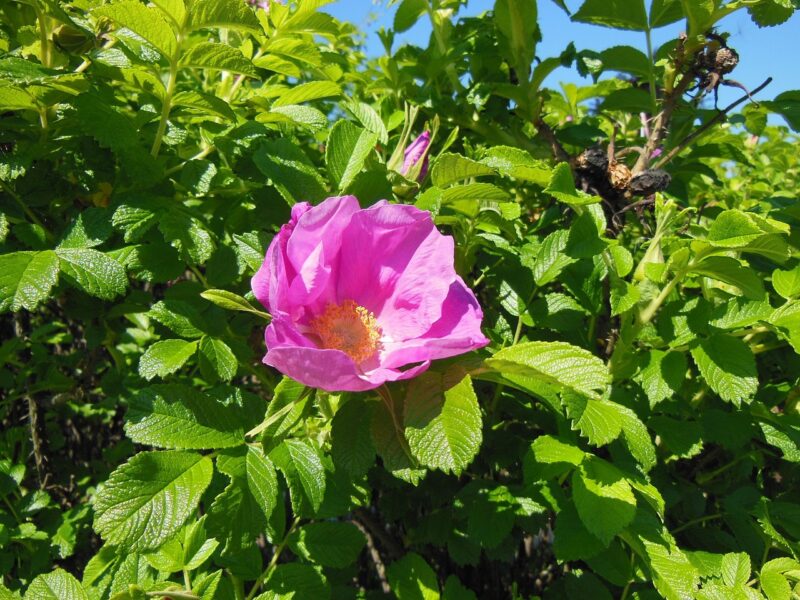
Shrub roses, also known as landscape roses, have become esteemed plants for sunny gardens due to their stunning blooms and hardy nature. Ranging in height from 2 to 4 feet, these compact varieties fit seamlessly into garden beds, borders, or even containers. They can produce a variety of flower colors, shapes, and fragrances, making them keenly sought after for vibrant outdoor spaces.
One of the most impressive attributes of modern shrub roses is their resistance to common rose diseases, such as black spot and powdery mildew. This increased resilience means that they require less chemical intervention and care, making them perfect for gardeners with busy lifestyles or those seeking more sustainable gardening practices.
These rose varieties thrive in full sun, where they can receive at least six hours of direct sunlight daily, which is essential for abundant flowering. They prefer well-draining soil and will benefit from regular watering, especially during dry spells. With proper care, shrub roses can bloom continuously from spring through fall, providing a delightful and fragrant display.
Beyond their ornamental uses, many shrub roses also have a unique ability to attract pollinators, further enriching the garden ecosystem. Gardeners can experience the joy of cutting stems to bring indoors for floral arrangements, enhancing overall enjoyment of this beautiful plant.
Cavatine Dwarf Japanese Pieris (Pieris japonica ‘Cavatine’)

The Cavatine Dwarf Japanese Pieris is a charming evergreen shrub that adds elegance and sophistication to sunny gardens. Typically growing between 2 and 3 feet tall, its compact, rounded habit makes it perfect for smaller spaces, borders, and mixed plantings.
Cavatine boasts glossy green leaves and produces delicate clusters of bell-shaped flowers that bloom in early spring. The white or pinkish flowers appear before the leaves fully unfold, enhancing the garden’s seasonal allure with a soft touch. The fragrant flowers are particularly attractive to bees and other pollinators, contributing to a lively garden environment.
This shrub thrives in well-drained, acidic soils and prefers full sun to partial shade conditions. Its ability to adapt to various light levels makes it a versatile option for a wide range of gardens. Cavatine is generally low-maintenance; a light pruning after flowering is usually sufficient to encourage healthy growth and maintain its compact shape.
Incorporating Cavatine Dwarf Japanese Pieris into the garden adds year-round interest, as its glossy leaves provide continuous color and charm. It can be used effectively in containers or as part of a perennial border, creating stunning floral displays in early spring.
Dwarf Bottlebrush (Callistemon viminalis)
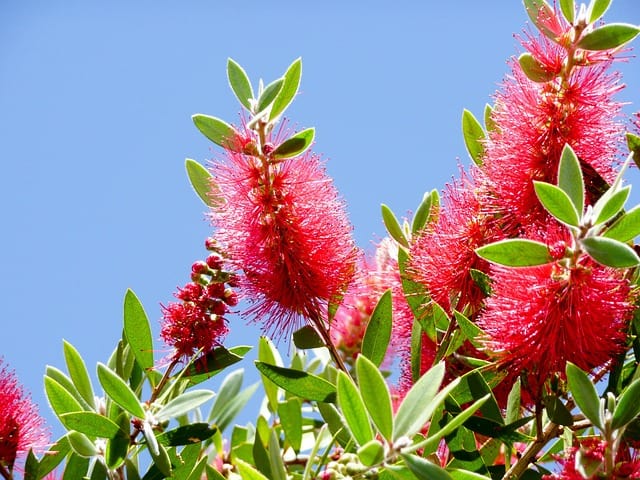
If you’re looking for a vibrant splash of color in your garden, the Dwarf Bottlebrush (Callistemon viminalis) offers just that. Typically growing to a height of 3 to 4 feet, this evergreen shrub is characterized by its unique brush-like flower spikes that emerge in shades of bright red or yellow, making it a standout feature in full sun gardens.
This shrub is known for its drought tolerance and can thrive in various soil types, thus making it an excellent choice for suburban landscapes or xeriscaped gardens. Dwarf Bottlebrush prefers full sun, ensuring that it creates an attractive backdrop of foliage while providing ample flowering periods throughout the warmer months.
In addition to its stunning appearance, Dwarf Bottlebrush attracts a variety of pollinators, including bees and hummingbirds, thereby enhancing biodiversity in any garden. Its dense and bushy growth habit makes it ideal for hedging or as a foundation plant, providing both aesthetic and functional benefits.
Care for Dwarf Bottlebrush is minimal, involving occasional pruning to maintain shape and encourage bushier growth. The vibrant flowers and resistant nature of this shrub make it an ideal choice for those who want a stunning, low-maintenance addition to their sunny garden.
Dwarf Crape Myrtle (Lagerstroemia indica)
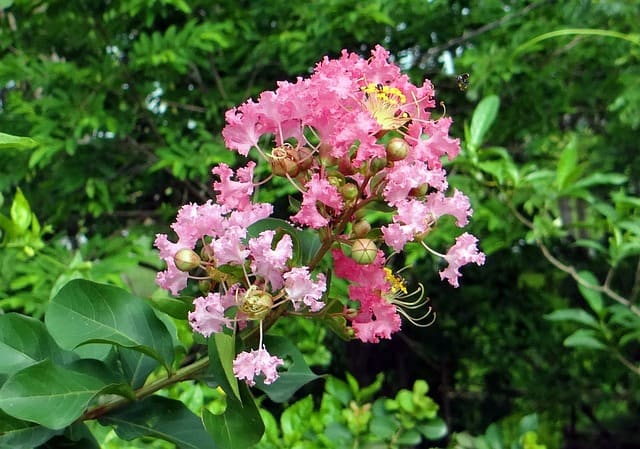
Dwarf Crape Myrtle is a highly sought-after shrub known for its exquisite summer blooms and beautiful foliage. Typically growing between 2 to 4 feet in height, this small tree or shrub produces an impressive show of colorful flowers in shades of pink, purple, red, and white, making it an attractive addition to any sunny garden.
Crape Myrtle flourishes in full sun, requiring at least six hours of direct sunlight to maintain blooms throughout the growing season. Its tolerance to heat and drought makes it an excellent choice for low-maintenance landscaping. The shrub’s bark also peels in an artistic fashion, revealing smoother bark beneath, which adds visual interest even in winter.
One of the most significant advantages of Dwarf Crape Myrtle is its extended blooming period, which usually lasts from late spring through early fall. The flowers are not just ephemeral beauty; they also attract a variety of pollinators, including bees and butterflies, enriching the biodiversity of the garden.
Pruning is often necessary to shape the growth and remove spent blooms, encouraging new flowering. With its unmatched color display and resilience, Dwarf Crape Myrtle brings sustained interest and charm to sunny landscapes, appealing to gardeners of all skill levels.
Dwarf Arborvitae Shrubs (Thuja occidentalis)
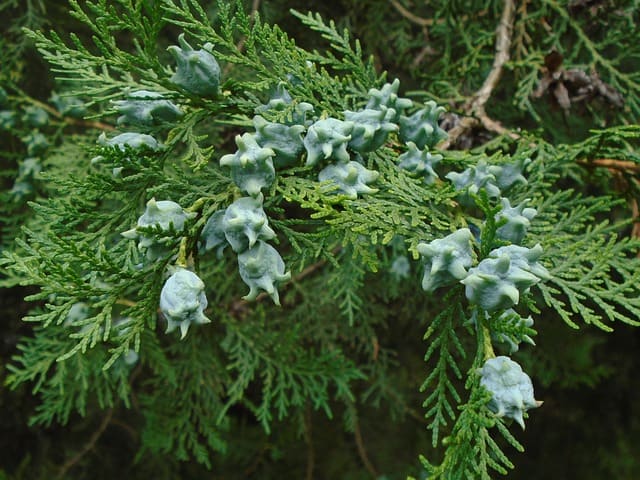
Dwarf Arborvitae shrubs, particularly those like ‘Emerald Green,’ are evergreen favorites for full sun gardens due to their lush green foliage and tidy, compact growth habit. Typically reaching about 3 to 4 feet in height, they create attractive borders or serve as stand-alone specimens that add structure to any landscape design.
Dwarf Arborvitae prefers well-drained soil and thrives best with full sun exposure, which supports healthy growth and rich green foliage. They are water-efficient once established, making them suitable for a range of moisture conditions.
With their natural pyramidal shape, Dwarf Arborvitae can be used effectively as privacy screens or low hedges, offering both functional and aesthetic value. Their evergreen nature ensures that the garden remains visually appealing all year round, even in winter.
Minimal pruning is required for maintaining shape, and these shrubs typically exhibit good disease resistance, allowing them to thrive without extensive care. Dwarf Arborvitae blends wonderfully with flowers and other shrubs, providing a backdrop of green while adding elegance and charm to sunny garden settings.
Small Juniper Shrubs for Full Sun (Juniperus)

Small juniper shrubs offer significant benefits for full sun gardens and come in various shapes and colors. Varieties such as Juniperus chinensis ‘Green Mound’ and Juniperus horizontalis provide exceptional ground cover or architectural structure, typically growing between 1 to 3 feet tall.
These evergreen shrubs are renowned for their drought tolerance and adaptability, making them ideal for challenging environments such as rocky or sandy soils. Junipers require full sun to maintain their dense growth habit and vibrant colors.
Their needle-like foliage can be dark green or blue-green, and many varieties produce attractive berries that can attract wildlife, further enriching the garden’s ecosystem. Junipers are exceptionally low-maintenance; they rarely require pruning and can thrive with minimal care once established.
By using small juniper shrubs in landscape design, gardeners can create visually intriguing layers in borders, utilize them as ground covers, or create foundation plantings. The structural nature of junipers enhances the aesthetic appeal of sunny gardens, making them an excellent choice for low-water landscapes.
Small Flowering Weigela ‘Alexandra’ Shrub (Weigela florida ‘Wine and Roses’)

The Weigela ‘Alexandra,’ commonly known as ‘Wine and Roses’, is a stunning deciduous shrub, cherished for its rich burgundy foliage and abundant pink blooms. Growing to a height of around 3 to 4 feet, this shrub provides a sizable presence while remaining manageable for small gardens or patio settings.
In late spring to early summer, the ‘Wine and Roses’ Weigela bursts forth with trumpet-shaped flowers that not only appeal to the eye but also attract pollinators such as hummingbirds and bees. The contrast of its deep red leaves with the delicate pink flowers creates an eye-catching display that enhances overall garden aesthetics.
Weigela flourishes in full sun, which encourages strong growth and maximizes flowering potential. It is adaptable to various soil types but prefers well-drained conditions. The low-maintenance nature of this shrub makes it ideal for busy gardeners; pruning is typically only necessary to maintain shape and promote fresher growth.
In landscape design, Weigela can be used loosely as borders, in mass plantings, or as stand-alone specimens, offering versatility and vibrant color throughout the growing season. Its beauty and ease of care make it a favorite among garden enthusiasts.
Wintercreeper Shrubs for Full Sun (Euonymus fortunei)
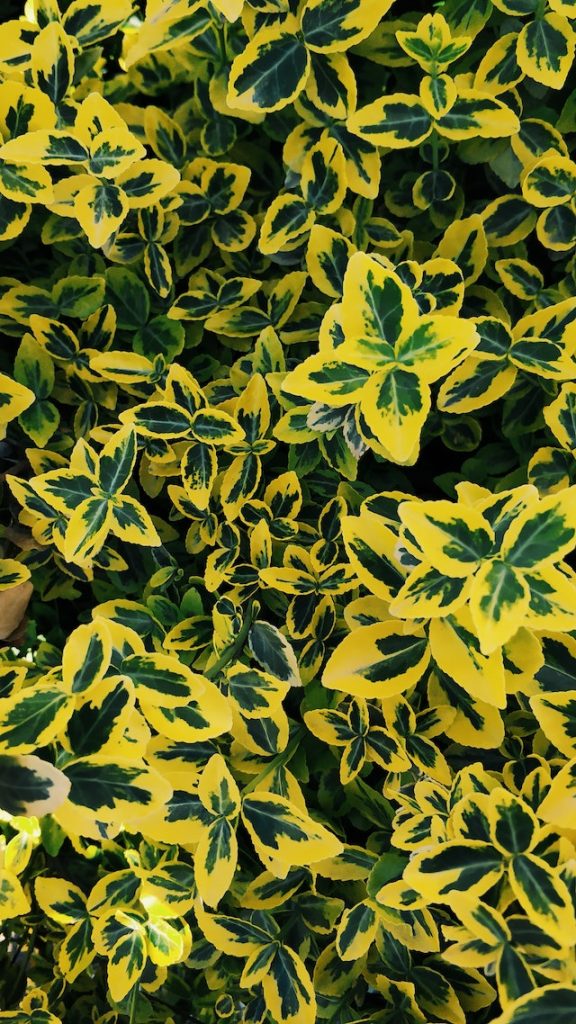
Wintercreeper, scientifically known as Euonymus fortunei, is a remarkable evergreen groundcover that provides appealing greenery in sunny gardens. Typically growing to a height of 1 to 2 feet, this shrub is perfect for filling gaps, creating borders, or covering slopes with its lush foliage.
The leaves of Wintercreeper are glossy and can come in various shades, including bright green and variegated forms. This adaptability in appearance lends itself well to diverse garden styles, creating texture and interest among other plantings. In fall, some varieties may exhibit additional color changes, enhancing seasonal appeal.
Wintercreeper thrives in full sun and is tolerant of various soil types, tolerating poor and dry conditions. It often requires minimal care, though regular trimming can help control its spread and maintain a uniform look.
Incorporating Wintercreeper into flower beds or mixed plantings enriches the garden habitat while preventing soil erosion. Its ease of growth and attractive appearance make it an invaluable addition to sunny landscapes, allowing gardeners to create lush, vibrant environments without a heavy burden of maintenance.
Dwarf Japanese Spindle Shrub (Euonymus japonicus)
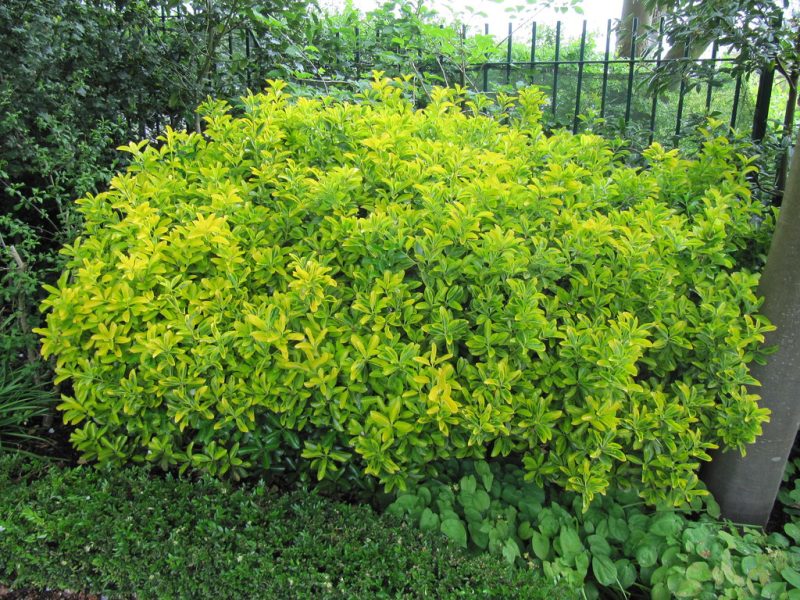
The Dwarf Japanese Spindle, or Euonymus japonicus, serves as a polished shrub perfect for sunny gardens, usually growing to about 2 to 3 feet in height. Its rounded, compact shape contributes elegance and versatility to landscapes, making it suitable for both formal and informal settings.
Dwarf Japanese Spindle is particularly known for its dark green, glossy leaves. In contrast to its visual appeal, this shrub also produces small, inconspicuous flowers in spring, followed by attractive berries in the fall. Although subtle, its flowering and fruiting serve to interest wildlife, supporting birds and insects within the garden.
This shrub prefers well-drained soil but can adapt to various soil types, provided that it receives adequate sunlight. Its low maintenance requirements—only needing occasional pruning to encourage bushier growth—further add to its appeal as a landscape staple.
Dwarf Japanese Spindle can be effectively utilized as a foundation planting, in borders, or as part of a mixed shrub garden. Its adaptability and year-round interest make it a popular choice that adds sophistication to sunny garden spaces.
Spiraea Shrubs for Sunny Gardens
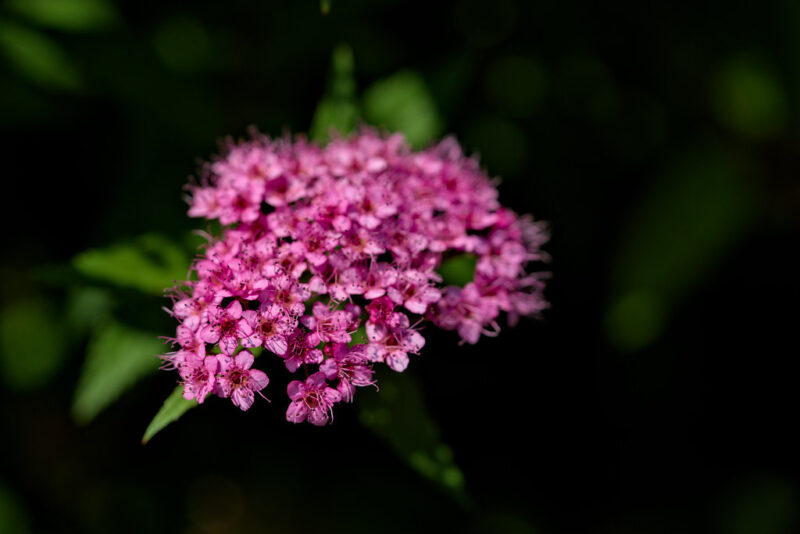
Spiraea shrubs represent a highly adaptable and beautiful option for sunny gardens, featuring a wide variety of species that shine in full sunlight. Growing between 2 to 6 feet in height, these deciduous shrubs produce charming clusters of flowers, primarily pink and white, from late spring through summer, making them exquisite garden additions.
One of the biggest benefits of Spiraea is its extensive range of forms and flower colors. For gardeners, this means that it is easy to find the perfect variety that suits their landscaping needs. Their attractive foliage, which often exhibits vibrant fall colors, further enhances their seasonal appeal.
Spiraea thrives in sunny locations and adapts well to a variety of soil types. Its resilience to drought once established makes it an outstanding choice for low-water gardens. Regular pruning is recommended to remove spent blooms and ensure a bushy shape, which can lead to more vigorous growth and additional flowering.
These shrubs can be planted en masse for dramatic displays or utilized as borders and hedges. Spiraea’s cheerful blooms and hardiness create inviting environments that attract valuable pollinators. Its versatility and charm make it a perennial favorite in sunny landscapes.
Small Spruce Shrubs (Picea glauca, Picea pungens)
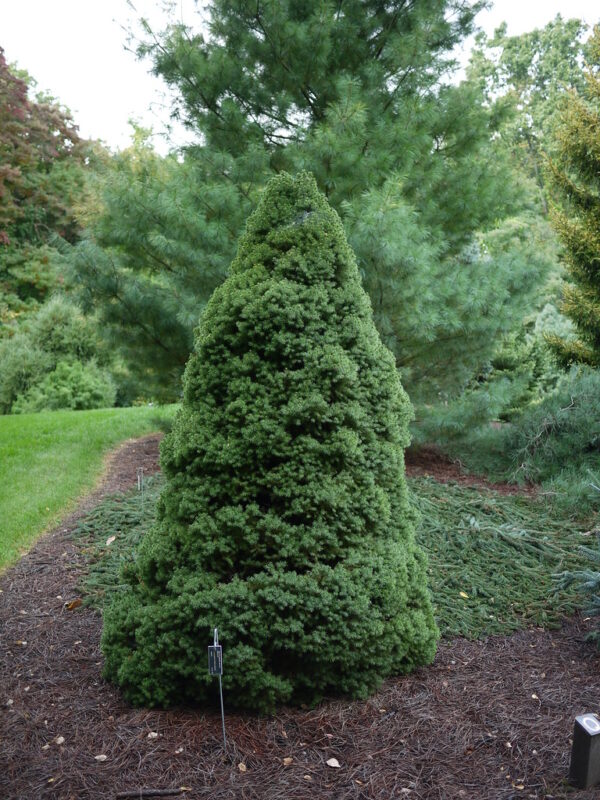
Small spruce shrubs, such as Picea glauca and Picea pungens, present a delightful option for gardeners seeking evergreen character in their full sun landscapes. Often growing between 3 to 6 feet, they can deliver a robust visual statement year-round while providing a nurturing environment for birds and small wildlife.
These conifers are characterized by their needle-like foliage, exhibiting rich green or bluish tones depending on the species. They prefer well-drained soil and full sun, ensuring that they flourish in sunny locations where they can reach their full potential.
Spruce enjoys mild winter climates but is generally hardy, capable of surviving colder zones. They often exhibit good pest and disease resistance, allowing gardeners to enjoy their beauty with minimal intervention. Once established, they require little watering, making them a suitable choice for low-maintenance gardens.
Using small spruce shrubs is ideal for creating privacy screens or as focal points alongside pathway plantings. Their natural shapes evoke a sense of enchantment in the garden, while their durability makes them reliable options for any sunny location.
Dwarf Evergreen Inkberry Shrub ‘Shamrock’ (Ilex glabra ‘Shamrock’)
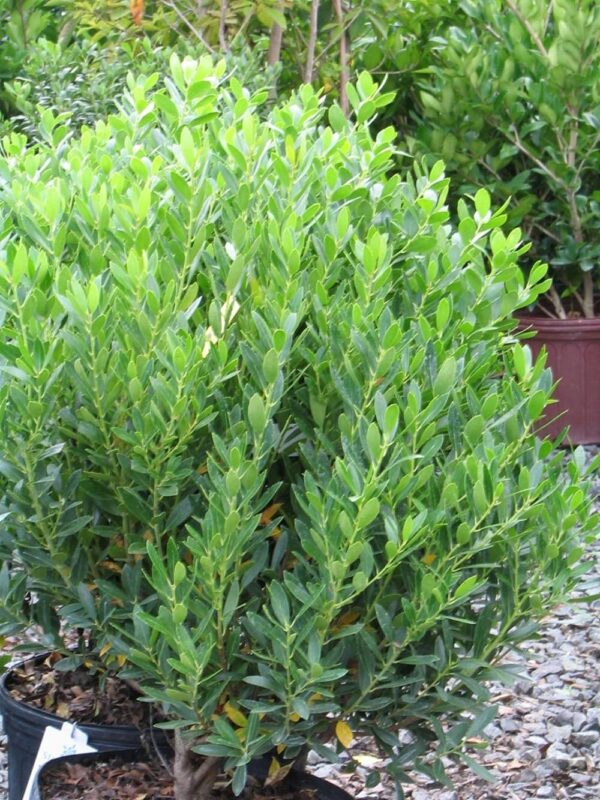
The Dwarf Evergreen Inkberry, particularly the ‘Shamrock’ cultivar, has proven to be a remarkable shrub that offers both aesthetic appeal and ecological benefits. Generally growing to a height of around 3 feet, this native evergreen provides lush, dark green foliage that adds depth and texture to sunny garden landscapes.
One of the key attributes of the ‘Shamrock’ Inkberry is its tolerance for a variety of soil conditions. While it thrives in acidic, moist environments, it can adapt well to dry conditions once established. Its ability to grow in both full sun and partial shade makes it a versatile choice for a range of garden designs.
In terms of maintenance, Dwarf Evergreen Inkberry is relatively easy to care for. Regular watering is essential during its establishment phase, especially in sunnier spots; however, minimal pruning is generally needed to maintain its shapely growth. The bushy nature of this shrub makes it effective in preventing soil erosion and can serve as a delightfully thick hedge providing privacy.
With its enchanting evergreen nature and resilience, Dwarf Evergreen Inkberry becomes a key player in sunny landscapes, enhancing biodiversity and attracting various wildlife to the garden.
Chinese Privet (Ligustrum sinense ‘Sunshine’)
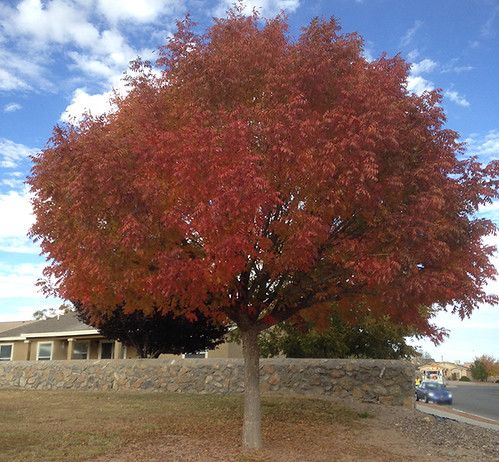
The ‘Sunshine’ cultivar of Chinese Privet presents a vibrant option for sunny gardens, offering bright yellow-green foliage that stands out vividly against other shrubs. Growing between 3 to 4 feet in height, this evergreen shrub is easy to care for, making it popular for gardeners aiming for an attractive yet low-maintenance plant.
‘Sunshine’ thrives in well-drained soil and prefers full sun conditions to encourage its striking coloration. It is highly adaptable, tolerating various soil types and urban conditions, making it a resilient option for hedging, borders, or accent planting. Its dense growth habit provides an excellent opportunity for privacy fencing or windbreaks if planted closely together.
In addition to its vibrant foliage, Chinese Privet produces small, aromatic flowers in late spring to early summer. While they may not be spectacular in appearance, these blossoms attract pollinators, further enriching the garden environment. The birds will also enjoy the berries that develop in the late summer, adding an extra layer of interest.
With minimal care required beyond regular watering and occasional pruning, Chinese Privet is a gardener-friendly evergreen shrub. Its brightness, practicality, and ecological benefits make it a fantastic choice for full sun gardens.
Dwarf Bottlebrush (Callistemon viminalis ‘Little John’)

The Dwarf Bottlebrush (Callistemon viminalis ‘Little John’) creates a cheerful presence in sunny gardens with its unique brush-like flower spikes. Typically growing to heights of 1 to 3 feet, this compact shrub showcases vibrant red flowers that bloom throughout the growing season, attracting various pollinators, including hummingbirds.
‘Little John’ thrives in well-drained soil, preferring full sun for optimal flower production. Its drought tolerance makes it ideal for hot climates, where water conservation is essential. This shrub can handle poor soil conditions, allowing it to adapt to capable growing in areas where many plants may falter.
The dense and bushy growth habit of Dwarf Bottlebrush creates excellent ground cover, ideal for accenting borders and pathways. Its vibrant flowers not only add pops of color but also contribute to the dynamic garden environment, making it a popular choice for attracting bees and butterflies.
In terms of care, Dwarf Bottlebrush generally requires little attention, with only occasional watering necessary during long dry spells. Pruning is usually limited to removing spent blooms and shaping the shrub. This versatility, combined with its attractive appearance and ecological benefits, makes Dwarf Bottlebrush an excellent pick for sunny landscapes.
Viburnum
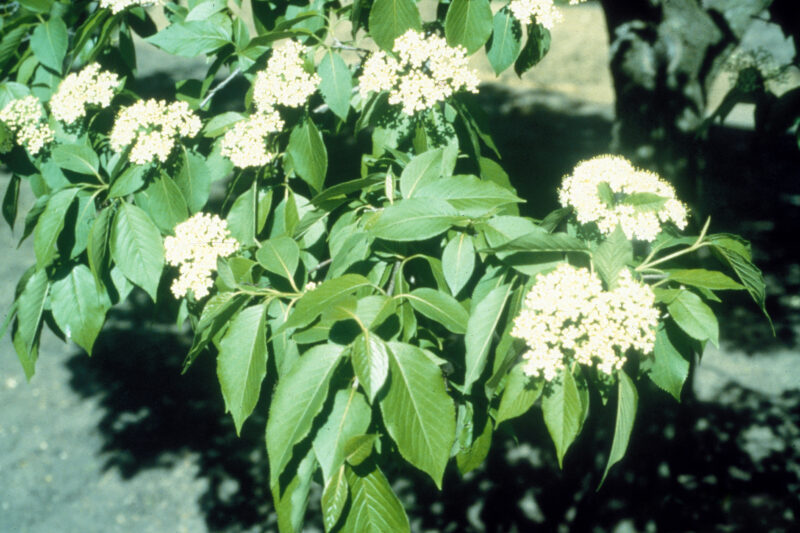
Returning once again to the enchanting realm of small Viburnum varieties ideal for full sun, these shrubs truly captivate with their endless diversity and charm. Species like Viburnum plicatum ‘Summer Snowflakes’ and Viburnum ‘Blue Muffin’ not only exhibit stunning flowers in spring but are also known for their rich fall colors and plotlines that attract wildlife.
The presence of fragrant white or pink flowers in spring invites pollinators and provides lushness before summer’s bounty of colorful berries appears. Many Viburnums exhibit a robust ability to adapt to varying soil types, providing nutrient-rich environments for growth and contributing to their hardiness.
The striking foliage transforms beautifully in autumn, showcasing an array of colors from gold to crimson, creating a dynamic visual experience throughout the seasons. Viburnums prefer to be stationed in full sun to maximize flowering potential and ensure healthy growth, and they require little attention beyond seasonal shaping.
Integrating small Viburnum shrubs into gardens encourages year-round interest; their versatility shines through in roles as specimens, hedges, or part of larger mixed borders. They contribute to local ecosystems by providing food and shelter for birds and pollinators, solidifying their importance in sunny landscapes.
Dwarf Chenille (Acalypha Reptans)

Finally, the Dwarf Chenille (Acalypha reptans) also merits significant attention as a delightful option for sunny gardens. With its compact stature and remarkable blooms, it captures the heart of those who seek colorful, charming, and low-maintenance plants in their landscapes. The combination of its tubular flower spikes and glossy green foliage creates a stunning palette that remains eye-catching throughout the growing season.
The Dwarf Chenille flourishes in sunny spots with well-drained soil, showcasing its resilient character as it thrives in heat and drought conditions. A true attraction to hummingbirds and butterflies, the shrub offers a dynamic visual experience that supports pollinator populations.
With its compact habit and vibrant colors, Dwarf Chenille makes an excellent choice for borders, small garden spaces, or even hanging baskets, where its cascading nature can shine. Minimal care beyond watering during dry spells and occasional pruning ensures that it maintains its splendid appearance without demanding excessive effort.
As a showstopper in sunny gardens, Dwarf Chenille stands strong among flowering shrubs, and its captivating blooms and low-maintenance characteristics make it a must-have for creating vibrant outdoor spaces.


